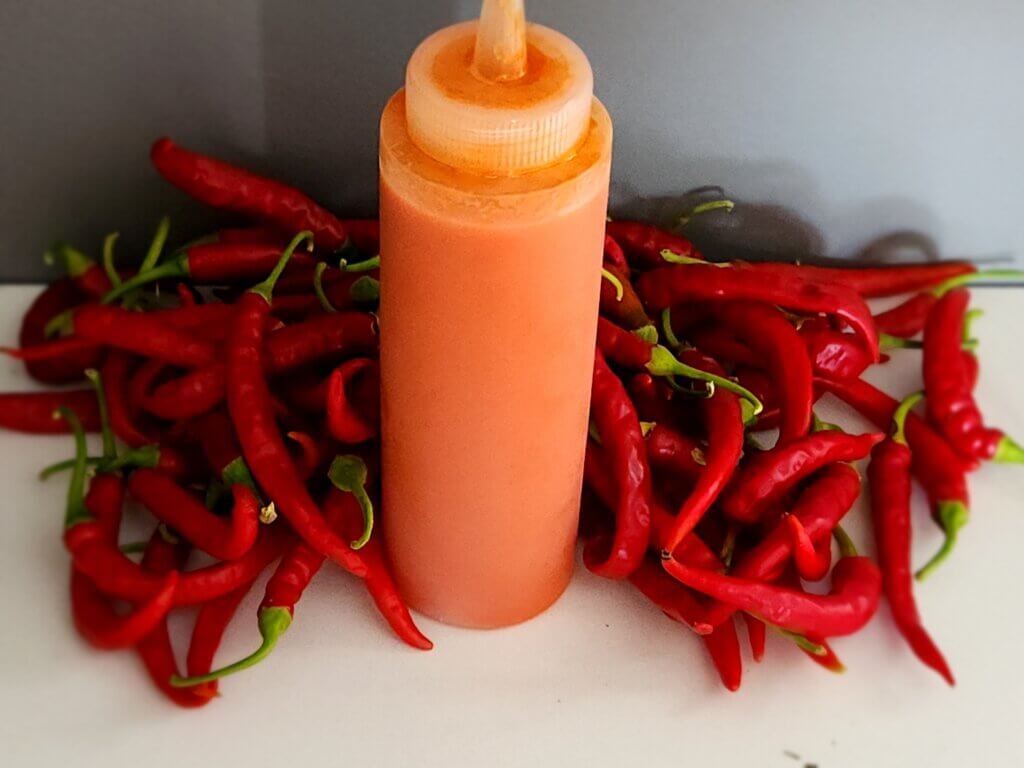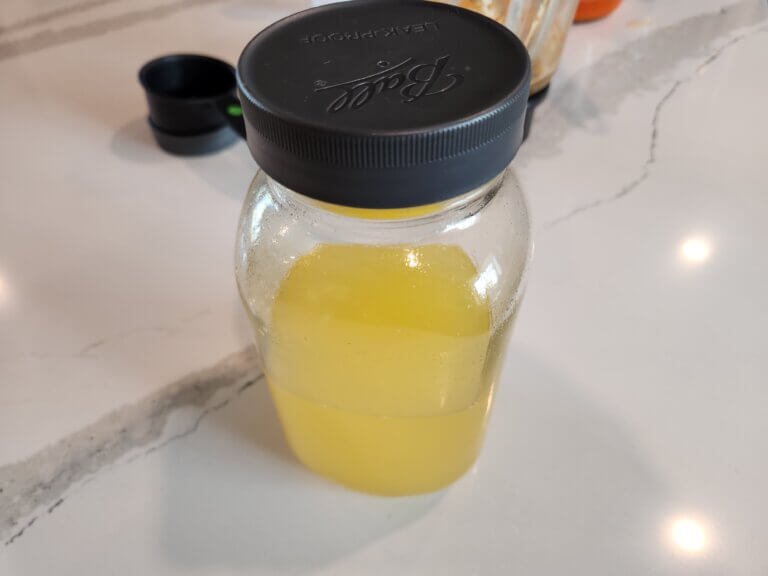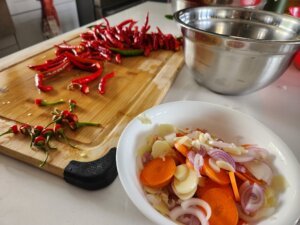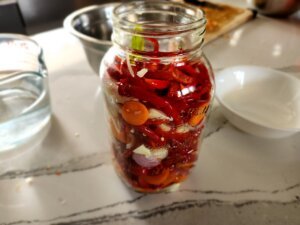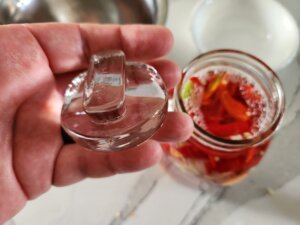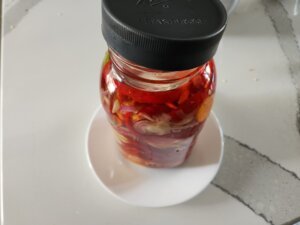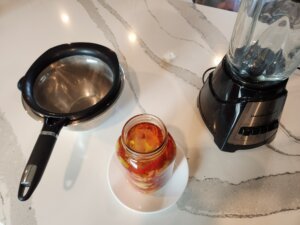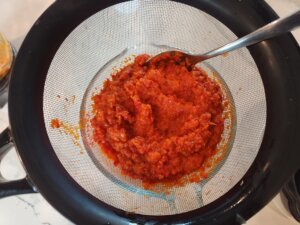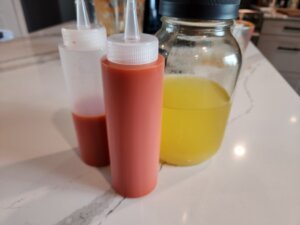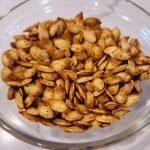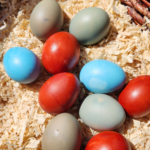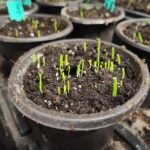We grow a lot of peppers here on the farm, and cayenne peppers are one of my favorites. They’re easy to grow, super productive, and pack the perfect amount of heat. One of the best ways I’ve found to preserve them is by making fermented cayenne pepper hot sauce. Not only does fermentation add amazing depth of flavor, but it also brings a whole bunch of health benefits to the table.
This post contains affiliate links. If you use these links to buy something we may earn a commission. Thanks.
If you’ve never made hot sauce, or only ever made vinegar-based hot sauce, I highly recommend trying this method. This fermented hot sauce recipe is simple, delicious, and packed with probiotics. Once you try it, you’ll never want store-bought again.
Why Ferment Cayenne Peppers For Hot Sauce?
Fermentation isn’t just for sauerkraut and sourdough. It works wonders on peppers too. When you ferment cayenne peppers:
- Deeper Flavor: The natural bacteria break down the peppers and garlic, creating a tangy, complex flavor that vinegar alone can’t match.
- Health Benefits: Fermented foods are full of probiotics that support gut health and boost your immune system. You’re basically getting flavor and wellness in every drop.
- Longer Shelf Life: The natural acidity that develops during fermentation helps preserve your hot sauce without needing loads of vinegar or additives.
Ingredients For Fermented Cayenne Pepper Hot Sauce
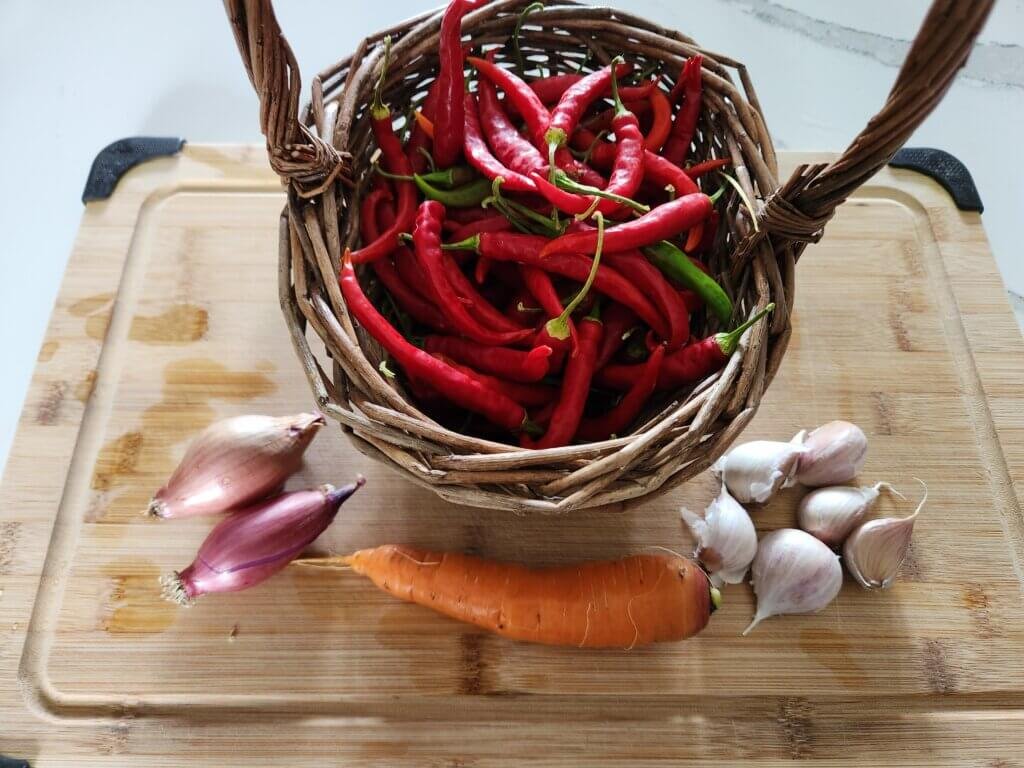
This recipe is really simple. You don’t need anything fancy, just fresh cayenne peppers and a little patience.
- 1 pound (454g/16oz) of ripe cayenne peppers. Sliced in half with the seeds and pith removed.
- 4–6 garlic cloves, peeled and sliced thinly. I normally go on the higher end of this.
- 1 carrot. Washed, but not peeled, and sliced thinly.
- 1/2 onion (red or yellow) about 1/2 cup sliced thinly.
- 800g of water (about 3 and 1/3 cups)
- 24g of sea salt (do not use table salt) to make a 3% salt brine
How To Make Fermented Cayenne Pepper Hot Sauce
Step 1: Make The Hot Sauce Brine
Dissolve the sea salt in the water. This brine is what protects your peppers and allows the good bacteria to thrive. The brine for this is a 3% salt brine.
Step 2: Prepare Your Ingredients
Thinly slice the carrots, onion, and garlic and set aside in a small bowl. Remove stem from peppers, cut in half and remove the seeds and pith.
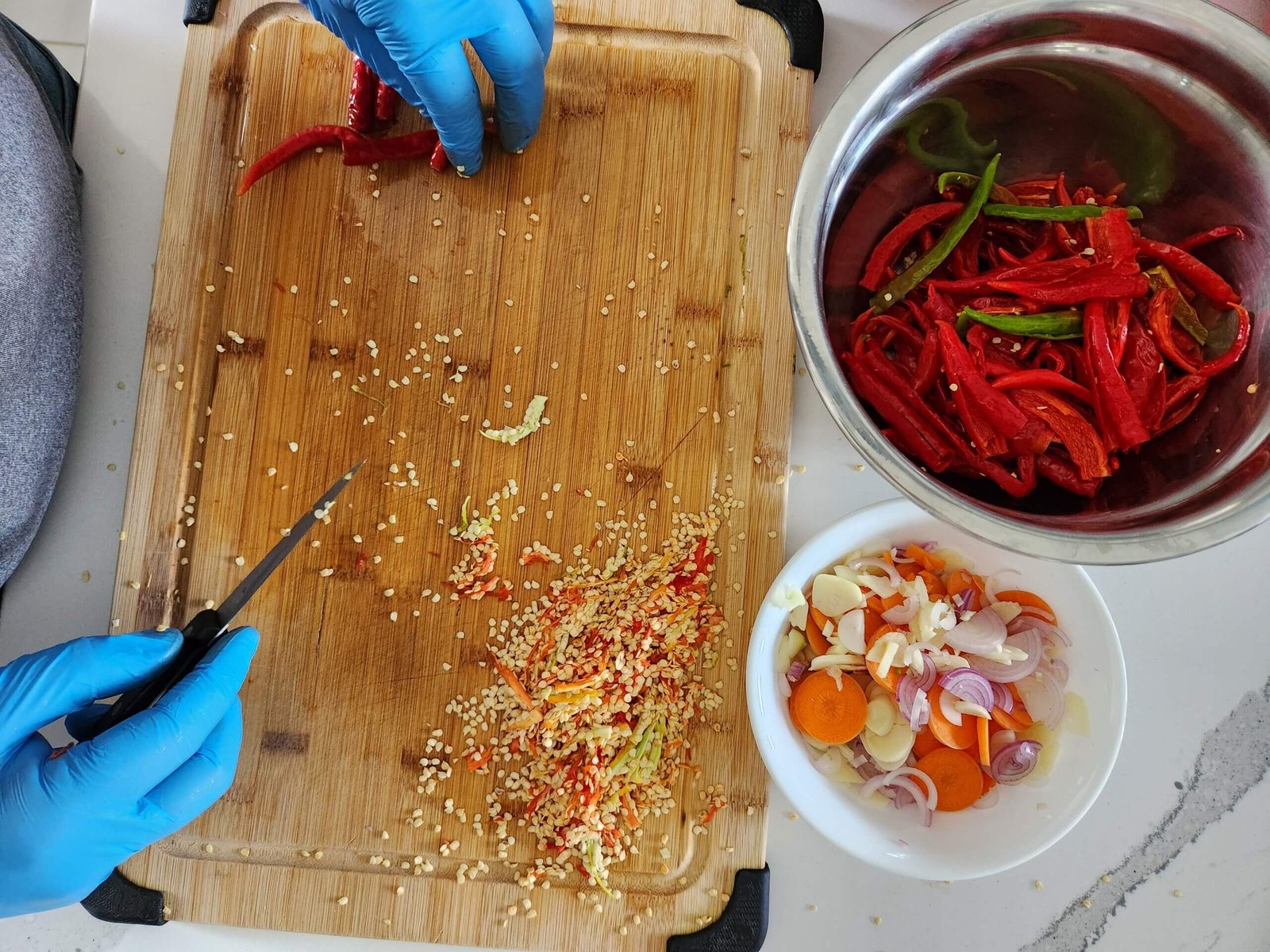
Step 3: Pack The Jar
Place your cayenne peppers, carrot, onion, and garlic into a clean mason jar. Layering the ingredients as you fill the jar. The mason jar does not need to be sterilized, it just needs to be clean.
Pour the brine over top until the peppers are fully submerged. Use a fermentation weight or even a small ziplock bag filled with brine to keep them under the liquid. If anything floats past the fermentation weight scoop it out. Anything on the surface could cause mold and ruin the fermentation process.
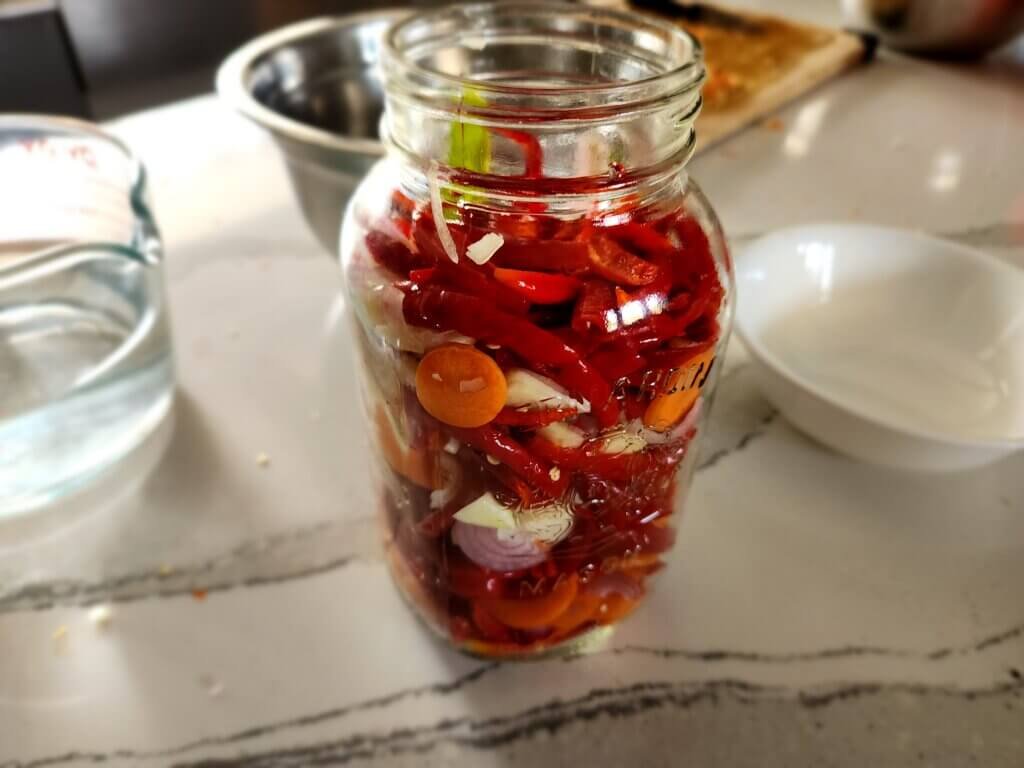
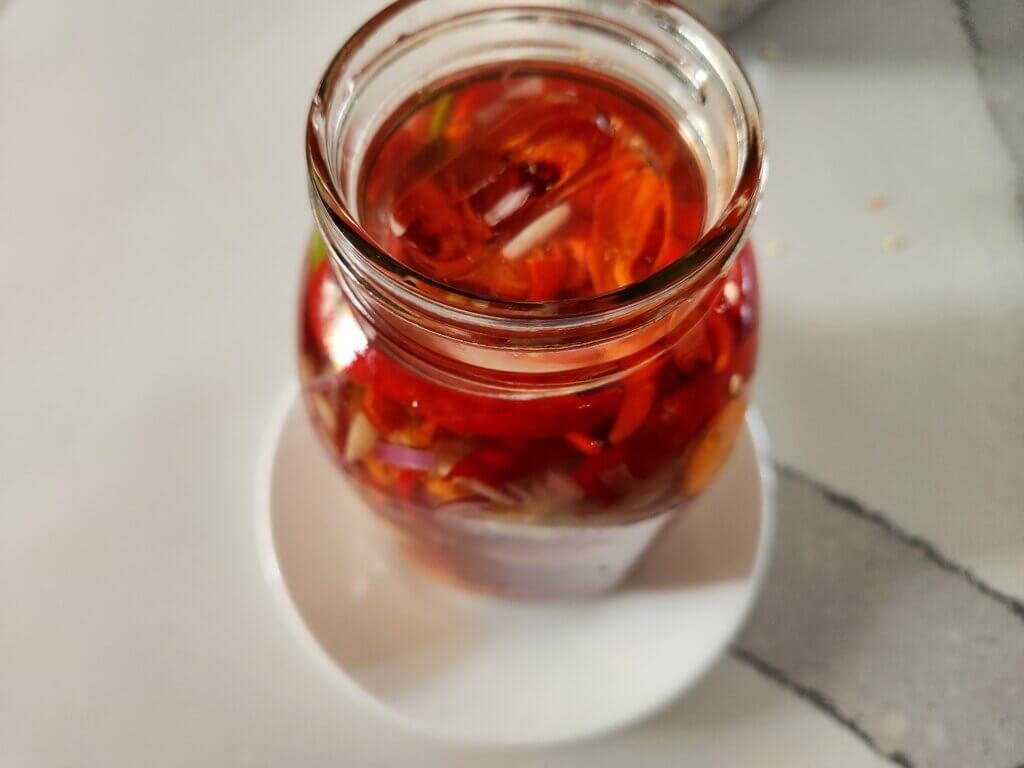
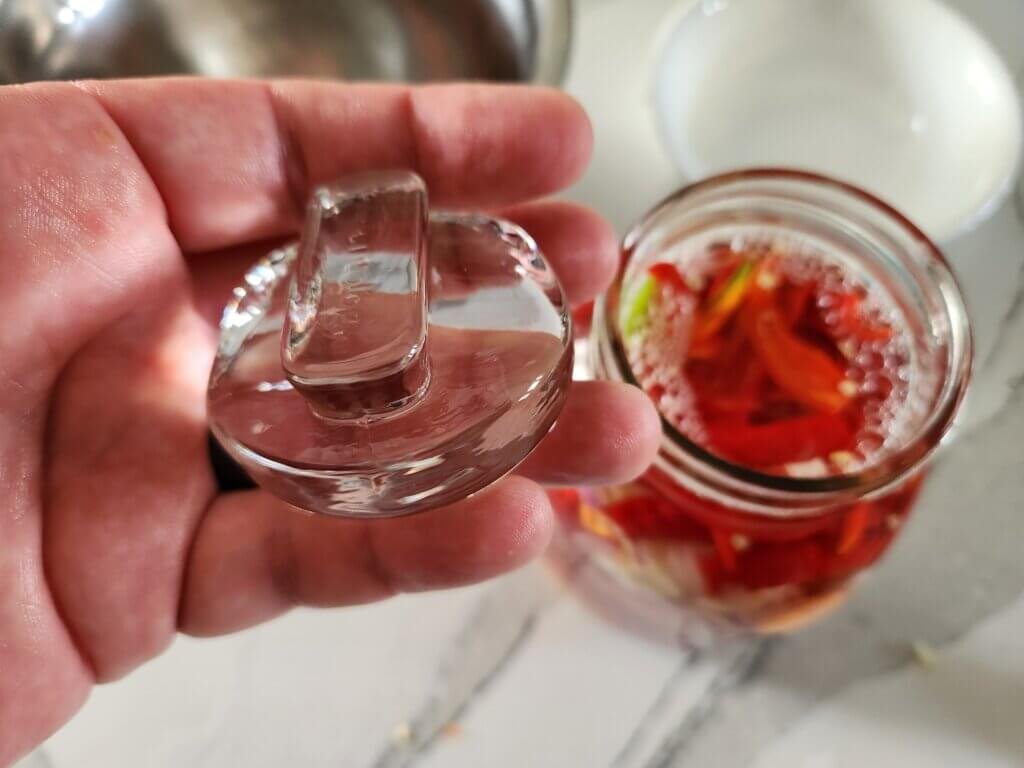
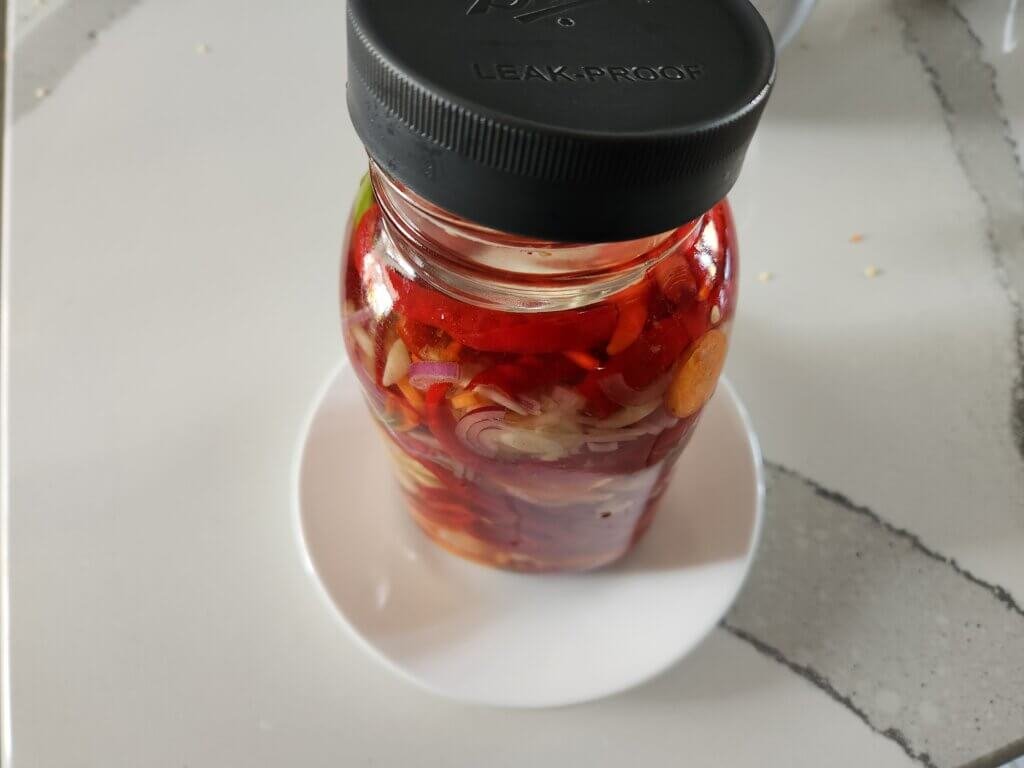
Step 4: Ferment The Hot Peppers
Cover the jar with a fermentation lid (or just use a regular lid loosely so gas can escape). Place it in a cool, dark spot in your kitchen. Let it ferment for at least 7–10 days, but you can leave it up to a month for stronger flavor. You’ll see bubbles forming that’s the good stuff happening.
We typically do a 14 day ferment with our hot sauce. The brine will become cloudy as it ferments. This is a good sign that the fermentation is working.
Step 5: Blend And Bottle
Once the peppers have fermented to your liking, pour everything (peppers, garlic, carrots, onion and brine) into a bowl through a Fine Mesh Strainer to separate the brine.
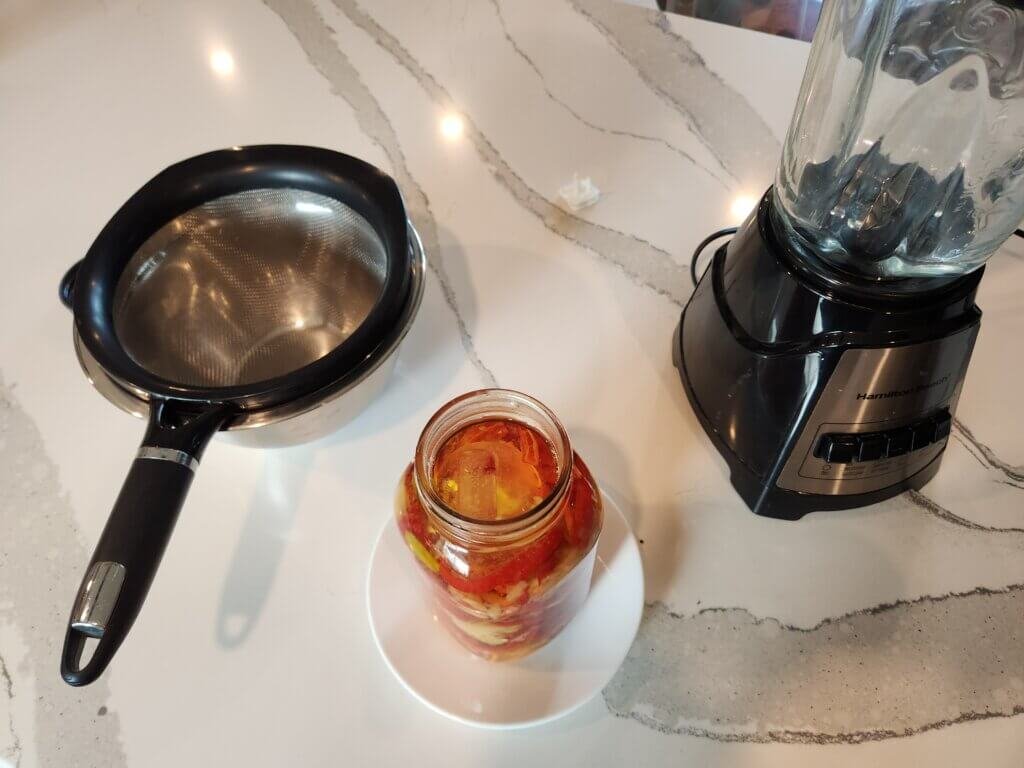


Add the separated ingredients a 1 cup of brine into a blender. Blend until smooth, adding more brine if needed.
Once the hot sauce is as smooth as you can get it pour it through a fine mesh strainer again into another bowl. Pushing the pulp through the strainer to get as much liquid out as possible. This is your finished hot sauce.
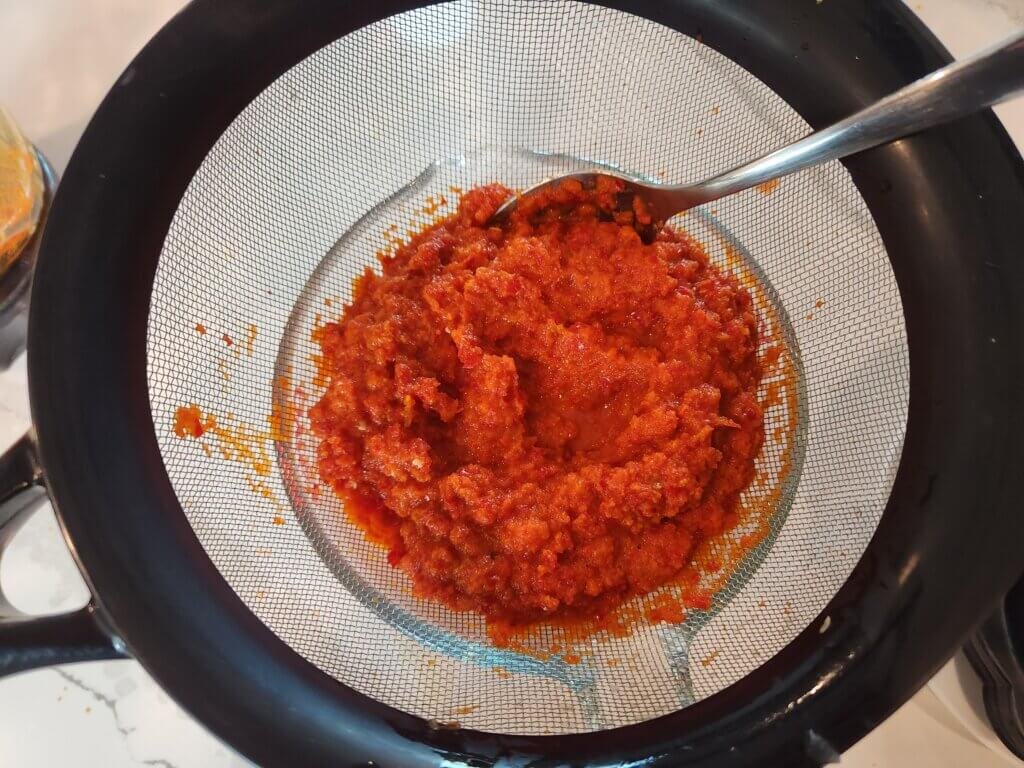

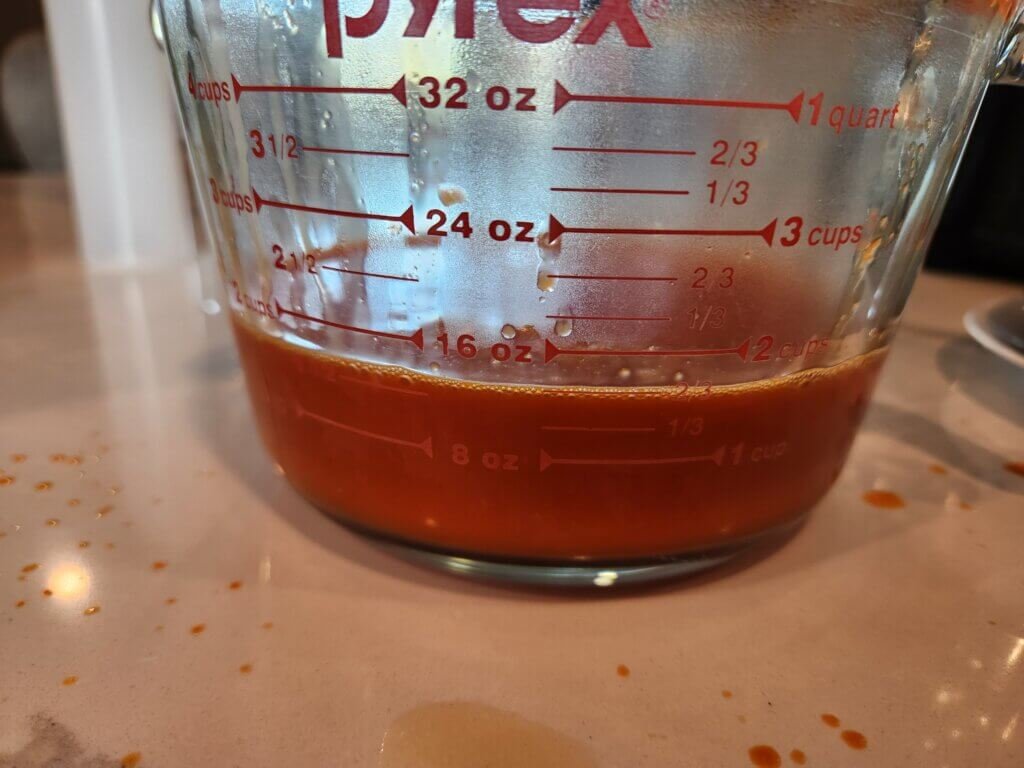
At this point, you can add a splash of vinegar for extra tang and shelf life, or leave it as-is for a purer fermented taste. Bottle your hot sauce in glass jars or hot sauce bottles (making sure to leave the lid removed as it will continue to ferment).
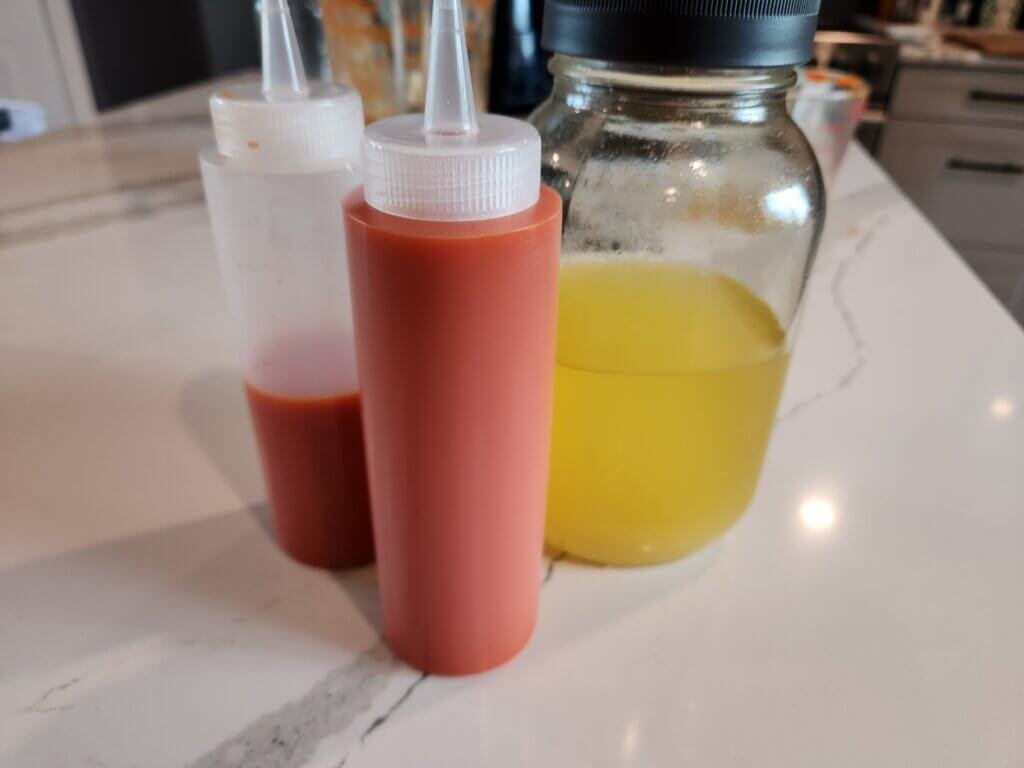
Store the hot sauce in the fridge. The fermentation process will continue while it’s in the fridge and the flavour will continue to develop and get better over time.
Tips For The Best Fermented Hot Sauce
- Use fresh, ripe cayenne peppers. The redder, the better. Learn how we grow peppers from seed to grow your own hot peppers for this recipe.
- Avoid chlorinated water. Chlorine can kill off the beneficial bacteria you need.
- Taste as you go. The longer it ferments, the more complex it gets.
- Adjust heat. If cayenne is too spicy, mix in some sweet peppers during fermentation.
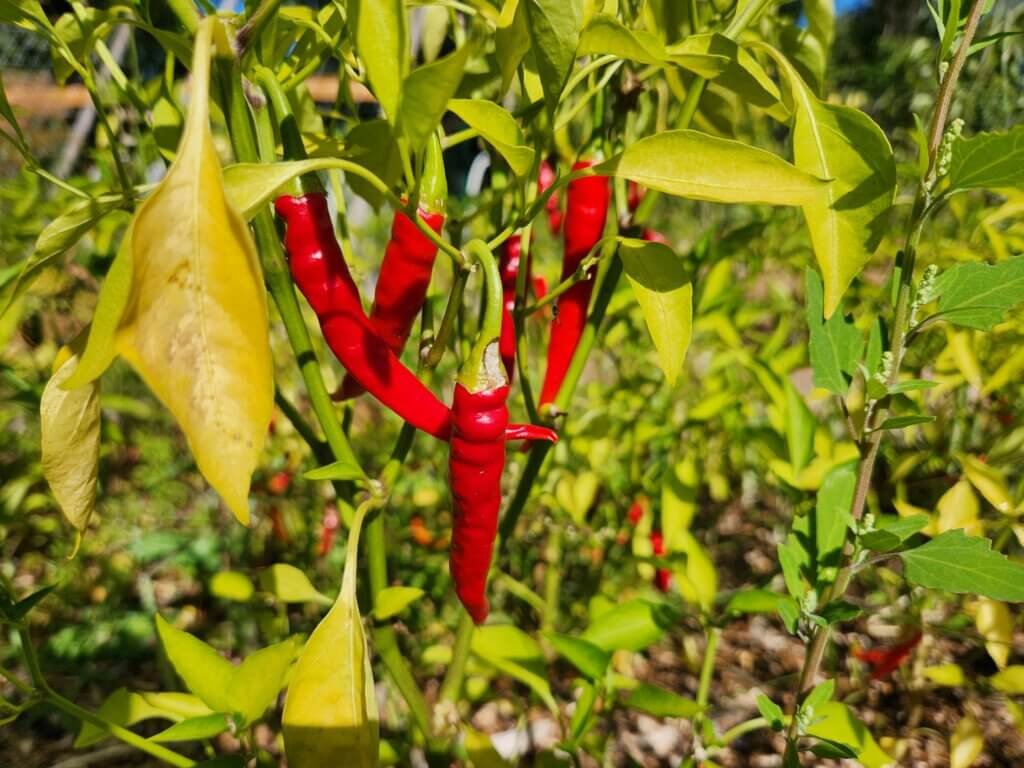
Health Benefits Of Fermented Cayenne Hot Sauce
This isn’t just about flavor, fermented hot sauce has some surprising benefits:
- Probiotics: Supports a healthy gut microbiome.
- Capsaicin in cayenne: May boost metabolism, reduce inflammation, and support heart health.
- Vitamin C: Peppers are loaded with immune-boosting nutrients.
It’s basically a condiment that’s good for you, and that’s a win in my books.
Serving Ideas
I put this stuff on just about everything. Some of my favorite ways to use fermented cayenne hot sauce are:
- Drizzled on scrambled eggs
- Mixed into soups or stews for an extra kick
- Added to marinades and salad dressings
- On tacos, pizza, or even a grilled cheese sandwich
If you love hot sauce, you’ll find yourself reaching for this bottle daily.
FAQ About Fermented Cayenne Pepper Hot Sauce
Most people ferment cayenne peppers for 7–14 days, but you can go up to a month or longer. The longer the fermentation, the tangier and more complex the flavor becomes. Taste along the way and stop when it’s perfect for you.
Yes. Once blended and bottled, fermented hot sauce should be kept in the fridge. The cold slows fermentation and keeps the flavors stable. Properly stored, it can last 6 months or more.
Fermented hot sauce has the added benefit of probiotics, which support gut health and digestion. It still has all the capsaicin and vitamins that cayenne peppers naturally offer, but the fermentation process gives you that extra probiotic boost.
Absolutely. All you need is a clean mason jar, salt, water, and peppers. Fermentation lids and weights make the process easier, but you can improvise with things you already have in the kitchen.
It’s best to use fresh cayenne peppers for fermentation. Dried peppers don’t ferment well on their own, but you can blend them into your sauce after fermenting fresh ones if you want to add more heat or depth of flavor.
That’s a good sign! The bubbles are carbon dioxide being released during fermentation. It means the beneficial bacteria are active and doing their job.
We keep our left over hot sauce brine in a mason jar in the fridge. We’ll add about 1/2 cup of the brine to our homemade focaccia recipe to give the dough a zesty flavour that can’t be beat. If could also be used in making fresh bread, pizza dough, or even added to a soup base to give a nice spicy zing.
Homemade hot sauce will often separate because it’s an emulsion of solids and liquids, which is normal and does not mean the sauce is bad.
To reduce separation, blend the sauce for longer, strain it to remove larger particles, or add a stabilizer like xanthan gum or mustard.
Final Thoughts
Fermented hot sauce is one of the best ways to preserve your pepper harvest, boost flavor, and enjoy the health benefits of probiotics. Whether you’re making a cayenne pepper hot sauce or experimenting with other peppers, this method delivers incredible results.
If you’ve got cayenne peppers growing in your garden (or even just bought a bunch at the market), give this recipe a try. Your taste buds, and your gut, will thank you.
We also have plenty of growing guides, seed saving guides and more recipes. We are growing our website with more articles all the time, and we invite you to grow with us. If you have any questions about fermenting hot sauce or would like to share some of your knowledge with us please leave a comment below.
If you try this recipe please leave a review and comment how it went. Happy Fermenting!
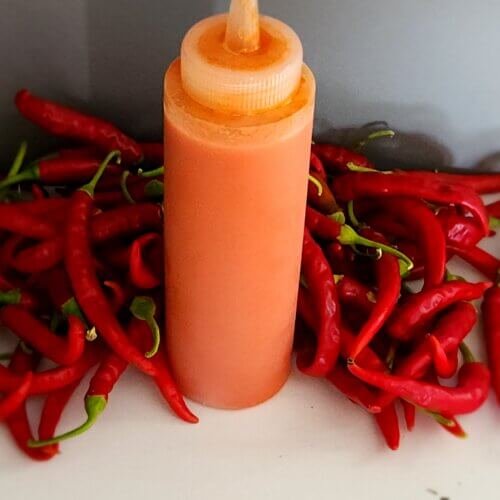
Fermented Cayenne Pepper Hot Sauce
Equipment
- 1 Blender
- 1 Mason Jar
- 1 Fine Mesh Strainer
- 1 or 2 Hot sauce bottles or jars
Ingredients
- 1 lb ripe cayenne peppers. Sliced in half with the seeds and pith removed.
- 6 garlic cloves Peeled and sliced thinly. I normally go on the higher end of this.
- 1 carrot. Washed but not peeled, and sliced thinly.
- 1/2 onion red or yellow about 1/2 cup sliced thinly.
- 800 g of water about 3 and 1/3 cups
- 24 g of sea salt Do not use table salt. Makes a 3% salt brine
Instructions
Step 1: Make the Brine
- Dissolve the sea salt in the water. This brine is what protects your peppers and allows the good bacteria to thrive. The brine for this is a 3% salt brine.
Step 2: Prepare your ingredients
- Thinly slice the carrots, onion, and garlic and set aside in a small bowl. Remove stem from peppers, cut in half and remove the seeds and pith.
- Preparing ingredients for fermented hot pepper sauce.Preparing ingredients for fermented hot sauce.
Step 3: Pack the Jar
- Place your cayenne peppers, carrot, onion, and garlic into a clean mason jar. Layering the ingredients as you fill the jar. The mason jar does not need to be sterilized, it just needs to be clean.
- Pour the brine over top until the peppers are fully submerged. Use a fermentation weight or even a small ziplock bag filled with brine to keep them under the liquid. If anything floats past the fermentation weight scoop it out. Anything on the surface could cause mold and ruin the fermentation process.
Step 4: Ferment the Hot Peppers
- Cover the jar with a fermentation lid (or just use a regular lid loosely so gas can escape). Place it in a cool, dark spot in your kitchen. Let it ferment for at least 7–10 days, but you can leave it up to a month for stronger flavor. You’ll see bubbles forming that’s the good stuff happening.
- We typically do a 14 day ferment with our hot sauce. The brine will become cloudy as it ferments. This is a good sign that the fermentation is working.
Step 5: Blend and Bottle
- Once the peppers have fermented to your liking, pour everything (peppers, garlic, carrots, onion and brine) into a bowl through a Fine Mesh Strainer to separate the brine.
- Add the separated ingredients a 1 cup of brine into a blender. Blend until smooth, adding more brine if needed.
- Once the hot sauce is as smooth as you can get it pour it through a fine mesh strainer again into another bowl. Pushing the pulp through the strainer to get as much liquid out as possible. This is your finished hot sauce.
- At this point, you can add a splash of vinegar for extra tang and shelf life, or leave it as-is for a purer fermented taste. Bottle your hot sauce in glass jars or hot sauce bottles (making sure to leave the lid removed as it will continue to ferment). Store the hot sauce in the fridge. The fermentation process will continue while it’s in the fridge and the flavour will continue to develop and get better over time.

